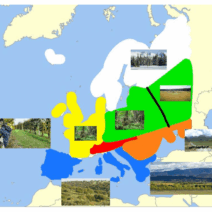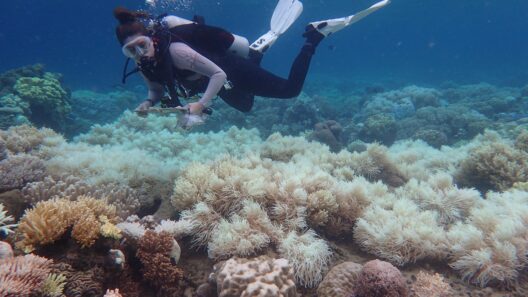Water is an indispensable resource, fundamental to life on Earth. It not only shapes our ecosystems but also drives our economies and societal structures. Yet, despite its importance, the water cycle—a meticulously orchestrated sequence that sustains our environment—is undergoing dramatic alterations fueled by global warming. This essay delves into the myriad ways climate change disrupts the water cycle, ultimately threatening this precious resource and our collective future.
The water cycle, also known as the hydrological cycle, encompasses a continuous movement of water within the Earth and atmosphere. It is characterized by processes such as evaporation, condensation, precipitation, infiltration, and runoff. When the sun heats bodies of water, evaporation occurs, turning liquid into vapor. This vapor rises into the atmosphere, where it cools and condenses to form clouds. Eventually, the clouds release precipitation—rain, snow, sleet, or hail—back to Earth, replenishing rivers, lakes, and aquifers. This cycle is what sustains life, replenishes soils, and maintains freshwater ecosystems. However, as global temperatures rise due to climate change, this delicate balance is increasingly thrown into disarray.
One of the most immediate impacts of global warming on the water cycle is the increase in evaporation rates. Warmer air holds more moisture, significantly altering weather patterns. For instance, arid regions may experience intensified droughts, while areas typically accustomed to moderate rainfall could face torrential downpours. This instability creates a paradox where certain regions become parched and others saturated, leading to a higher incidence of both drought and flood disasters. The consequences ripple through agricultural sectors, as crops either wither under the sun or are obliterated by unexpected deluges, ultimately endangering food security.
The interaction between temperature and water vapor concentration cannot be overstated. As atmospheric temperatures rise, the water vapor content increases—enhancing the greenhouse effect. With more water vapor in the atmosphere, not only do storms become more severe, but the overall unpredictability of weather patterns increases. This unpredictability complicates water resource management, as communities can no longer rely on historical data to forecast water availability. The strategic planning of urban infrastructure, agricultural practices, and community resource management falls under the shadow of uncertainty, complicating strategies to ensure water security.
Global warming does not merely promote extremes in weather; it also impacts snow and ice melt. Glacial landscapes and snowpack reservoirs act as natural water towers, storing moisture during colder months and releasing it slowly as temperatures rise. However, rising global temperatures have resulted in accelerated melting rates of glaciers and diminishing snow cover. This phenomenon is evident in major mountain ranges such as the Himalayas and the Rockies. Lower snowpack levels will inevitably lead to reduced streamflow during critical periods of the growing season, exacerbating water scarcity for both human and ecological systems.
Moreover, the phenomenon of changing precipitation patterns exacerbates global freshwater crises. Areas that were previously consistent sources of rainfall are now facing escalating variability. Regions suffering from chronic water shortages may see their situation worsen, while regions increasingly targeted by heavy rainfall face the repercussions of flooding and erosion. These dynamics not only threaten the stability of freshwater supplies but also compromise the quality of water sources as sediment and pollutants can be washed into rivers and lakes, diminishing their usability.
As we dissect the alarming consequences of global warming on our water resources, it becomes evident that the traditional understanding of conservation and resource management must shift. Innovation will be pivotal in addressing the unique challenges posed by a warming climate. Adaptive approaches to water management that consider variability in precipitation and shifts in evaporation rates will become paramount. Strategies such as rainwater harvesting, advanced irrigation techniques, and policies focusing on aquifer replenishment are necessary to mitigate the strain on this vital resource.
Additionally, water policies must be aligned with sustainable practices that address the realities of climate change. There is a dire need to incorporate adaptive management techniques into existing frameworks, emphasizing resilience and sustainability. Public awareness campaigns should also engage communities in fostering a deeper connection with their water sources and implementing best practices in water conservation. Educating citizens about their role in preserving this resource facilitates more significant community involvement and creates a culture of sustainability around water use.
The science of desalination is another critical avenue that offers promise. As surface water sources dwindle, technologies that convert seawater into potable water can alleviate some pressure on freshwater supplies. However, the implementation of such technologies must be pursued cautiously, considering the environmental ramifications of energy consumption and the impact on marine ecosystems.
Ultimately, the specter of climate change looms large over our water resources, challenging us to rethink our relationship with this essential element. A radical shift in perspective is necessary to navigate the complexities introduced by anthropogenic factors. We must acknowledge that water scarcity, like many effects of climate change, is not just an environmental concern but a social and economic one as well. Prioritizing water sustainability while embracing innovative solutions will ensure that future generations can benefit from our most vital resource, safeguarding it from the unpredictable wild ride of the changing climate.








